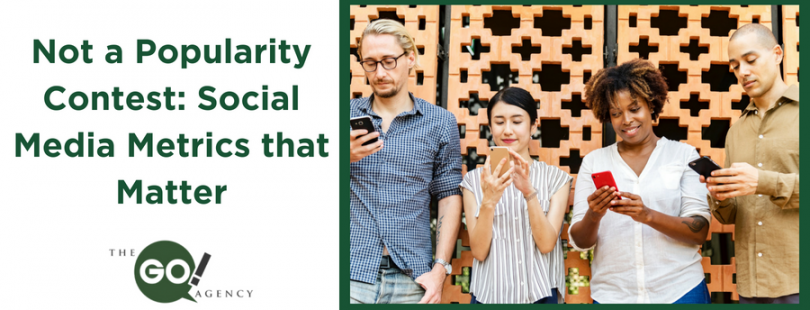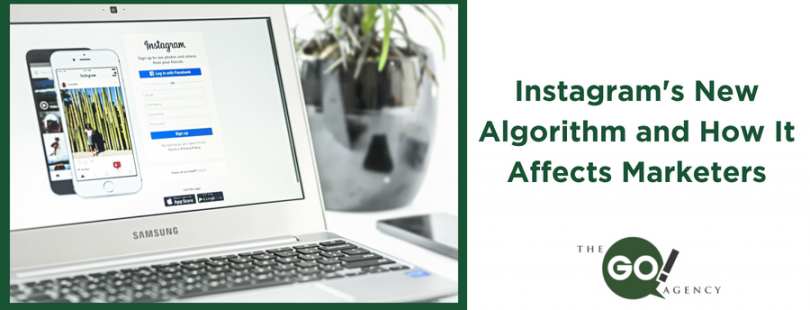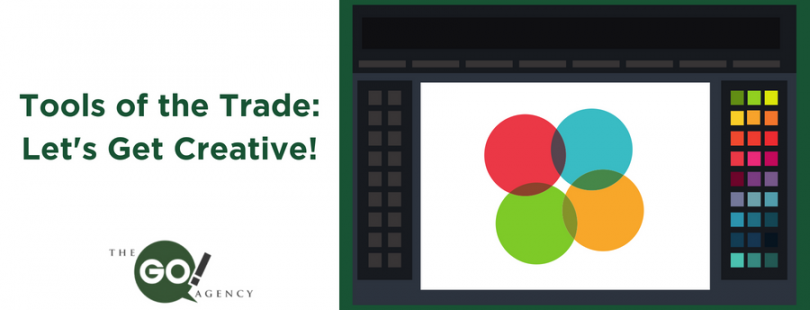For the rest of the summer, the Go! Agency blog will focus on the social media habits of some of our favorite industries. Every week, our first blog will explain common mistakes made by an industry; followed by a second blog that will explain how to fix them. Think of this series as What Not to Wear for social media marketing!
This week we’re taking a break from perfecting our asanas to meditate on yoga studios. Although social media (Instagram in particular) seems ideal for this industry, several yogis and studios are guilty of social media blunders. We’ll present the major faux pas today, and fix them in our next blog!
Inferior Images
You need to have quality images, no matter the subject. Social media is a visual space: in 2017, Facebook posts accompanied by images received over twice the engagement as image-free posts. According to Buffer, tweets with images receive more favorites and more retweets. Many yoga poses are visually striking, so there is no excuse for poor photography. That carries over to pictures of your studio space. For whatever reason, a lot of accounts seem to post pictures of studio corners–literally, the corners of the room. It’s an odd trope that should be avoided. (P.s., a good Instagram filter will not salvage a bad photograph!)
Not Posting Frequently Enough
On social media, yoga communities are very active and engaged. A studio should understand that posting once a week will not attract followers. Facebook and Twitter profiles should be updated a few times every week; Instagram, however, should be updated once a day at minimum. Successful yoga Instagram accounts have massive amounts of content that they share with their followers.
All Inspiration, All the Time
Quotes are lovely. Quotes are inspiring. Quotes are great filler for when you need content in a pinch. Unfortunately, a few quotes go a long way. Yoga studios post inspirational quotes like some people post memes: far too often. Seriously, when your content is
[pose] [quote] [pose]
[studio] [quote] [quote]
[flyer] [quote] [pose]
you have a problem. Too many of these inspirational images make a page look monotonous. Once a week is plenty, believe us.
Neglecting the Human Element
While the yoga community is still somewhat divided about taking pictures in a class, this is no excuse to eschew posting about willing subjects. Posts about your studio’s yoga instructors are especially good for social media purposes. So many studios neglect to show off their staff. Followers (and potential clients) want to know more about the person teaching the classes. As long as you have their full informed consent, you should incorporate staff into your social media.
Not Connecting to the Yoga Community
Yoga is huge on Instagram. There are hundreds of micro-and macro-influencers on that platform alone, some of whom have over one million followers. Yoga hashtags are consistently popular, like #yogaeverydamnday (14,255,917 posts) and #yogaeverywhere (5,094,717 posts). There are yoga challenges on a daily basis–providing ample opportunities for exposure and shares! You are hurting your brand by avoiding the opportunity to connect with the yoga community in a different way.
Too Little Information
Some studios that choose to post photographs of poses do not include instructions with pose posts. These studios are missing out on the chance to educate their followers. Posting photos of specific poses is an opportunity to guide people on proper form and body alignment, as well as some of the deeper aspects of yoga. Posts of poses that don’t include instructions are lovely, but otherwise lack purpose.
In our next blog, we’ll profile a hypothetical studio making these real mistakes. We’ll show you how easy it is to get your studio’s social media strategy back on track!
Does your yoga studio’s social media marketing strategy align with your goals? We want to help! Contact The Go! Agency today for a free consultation!
Read More















